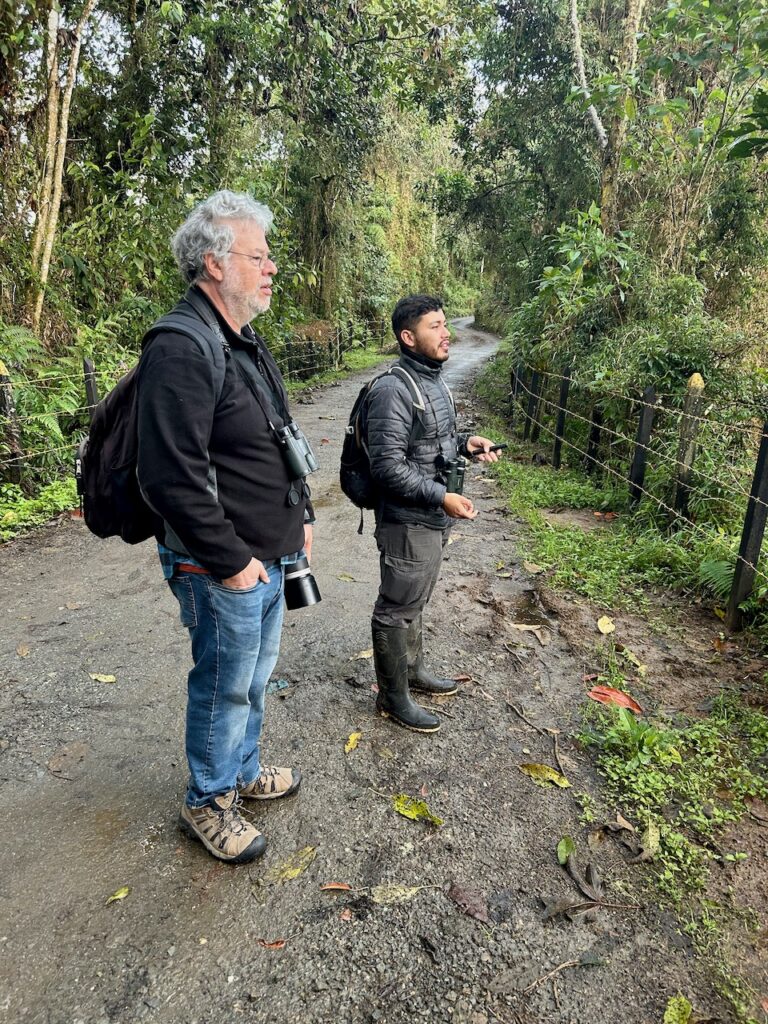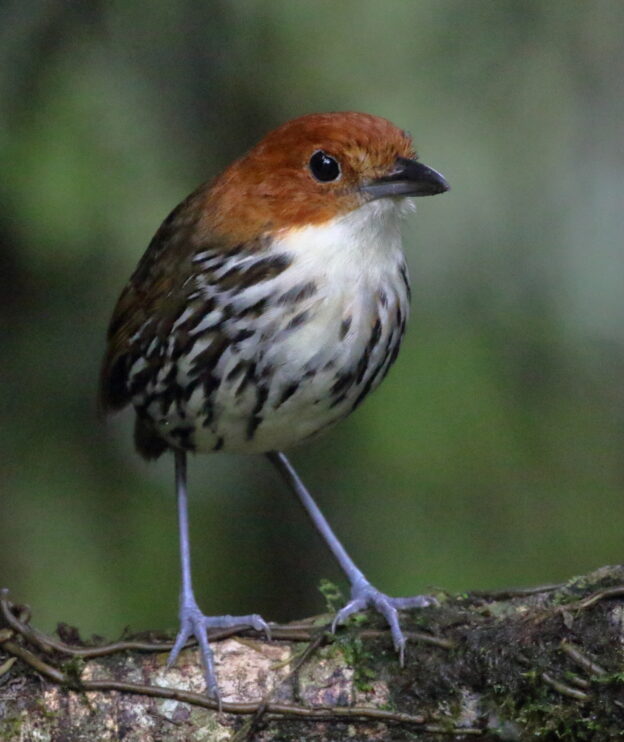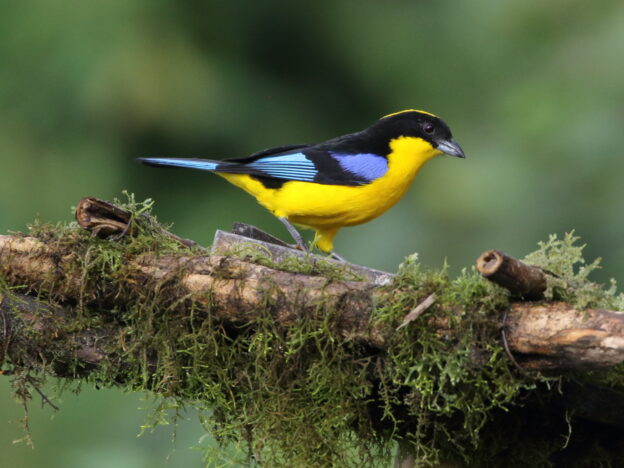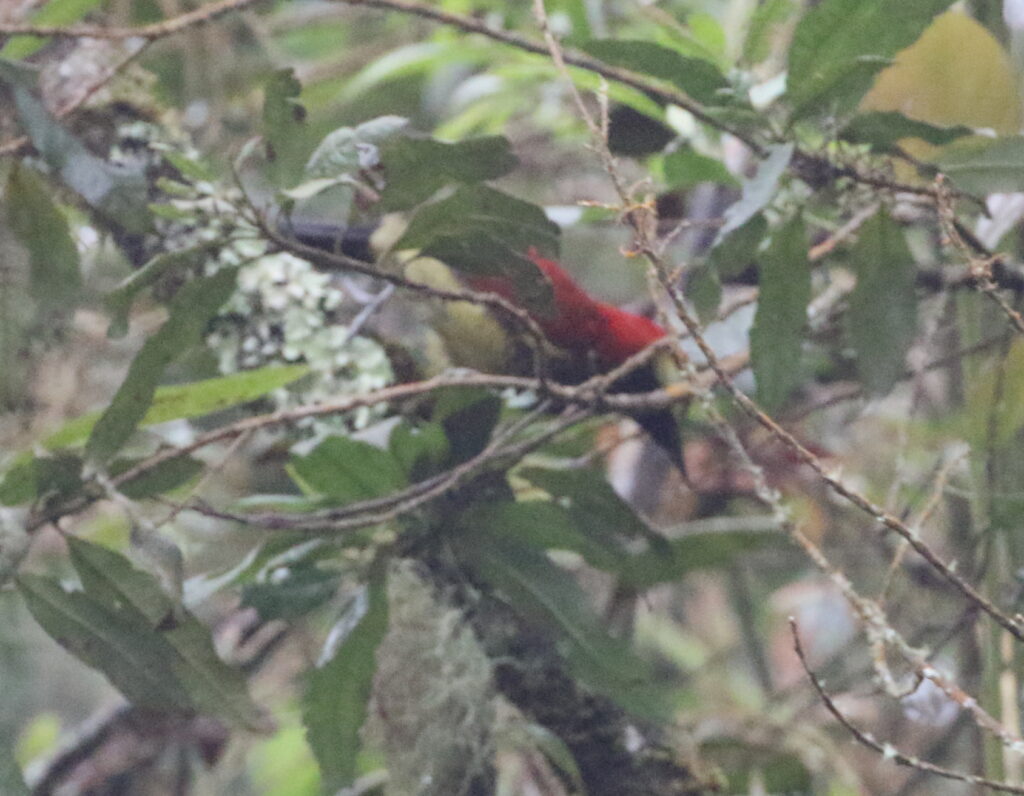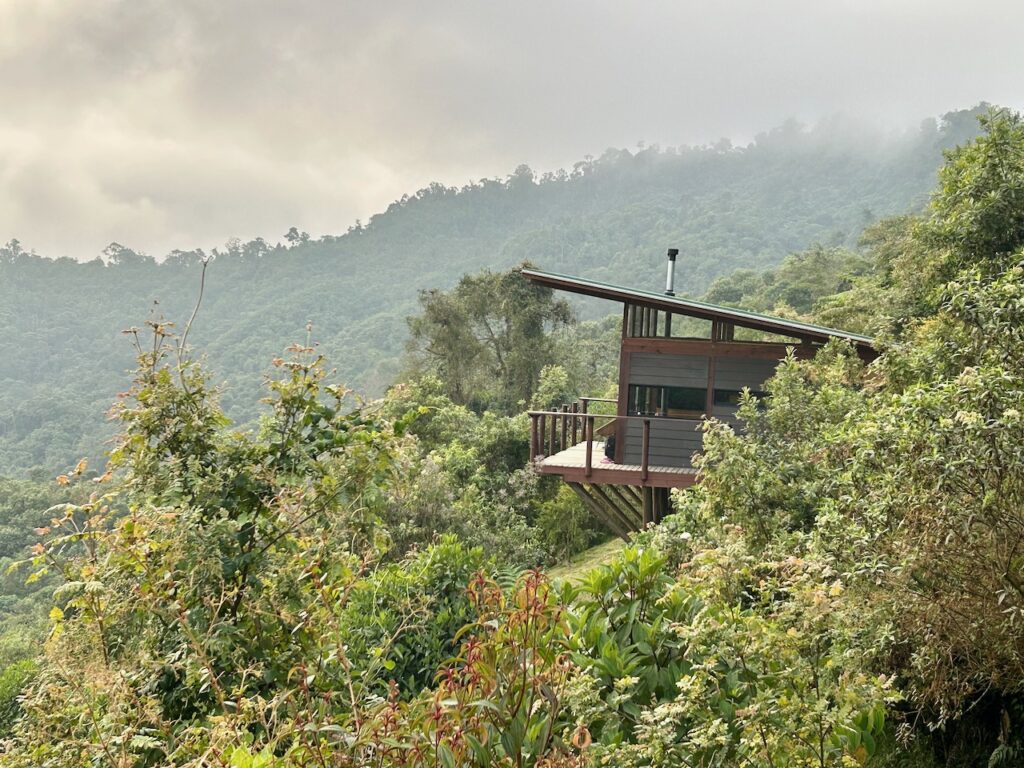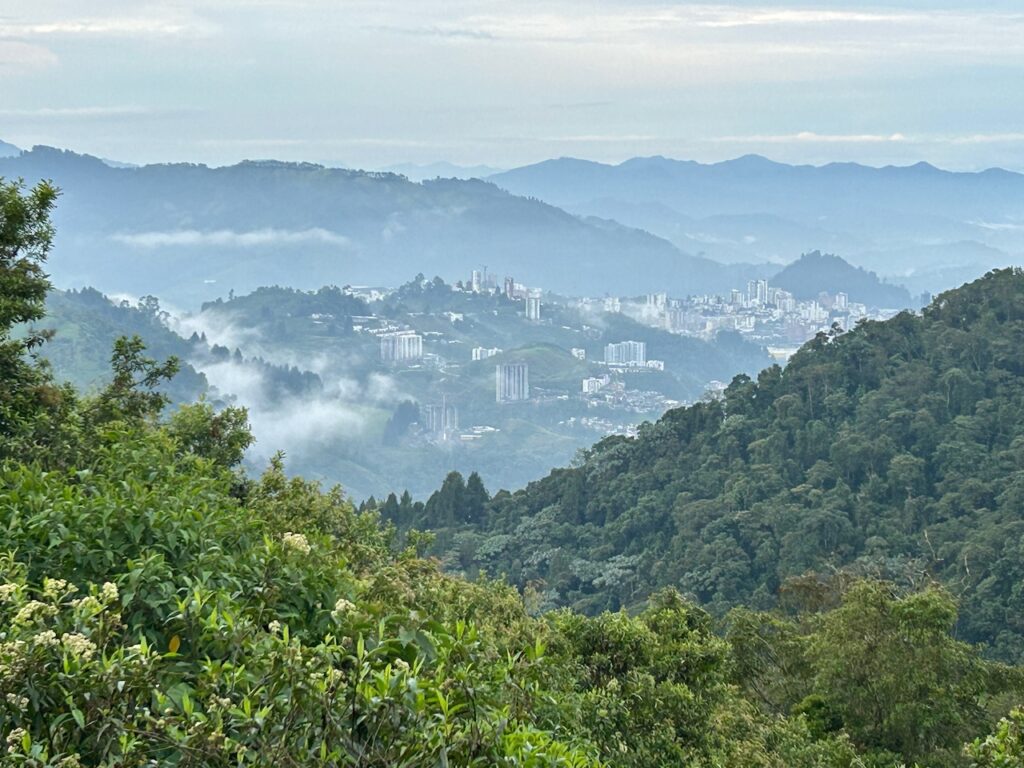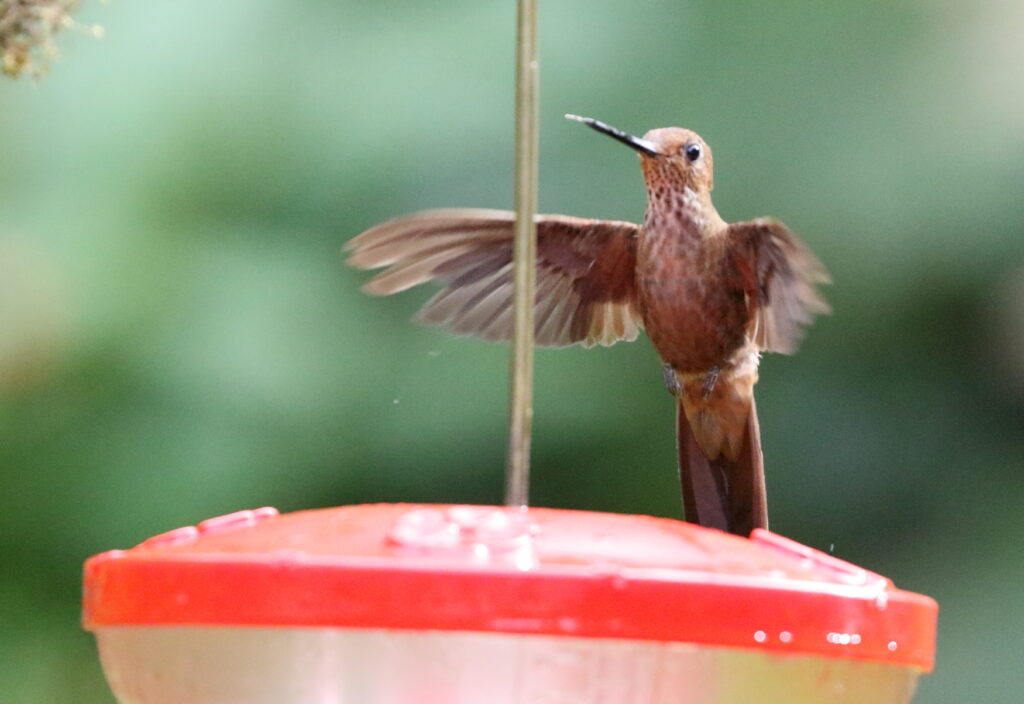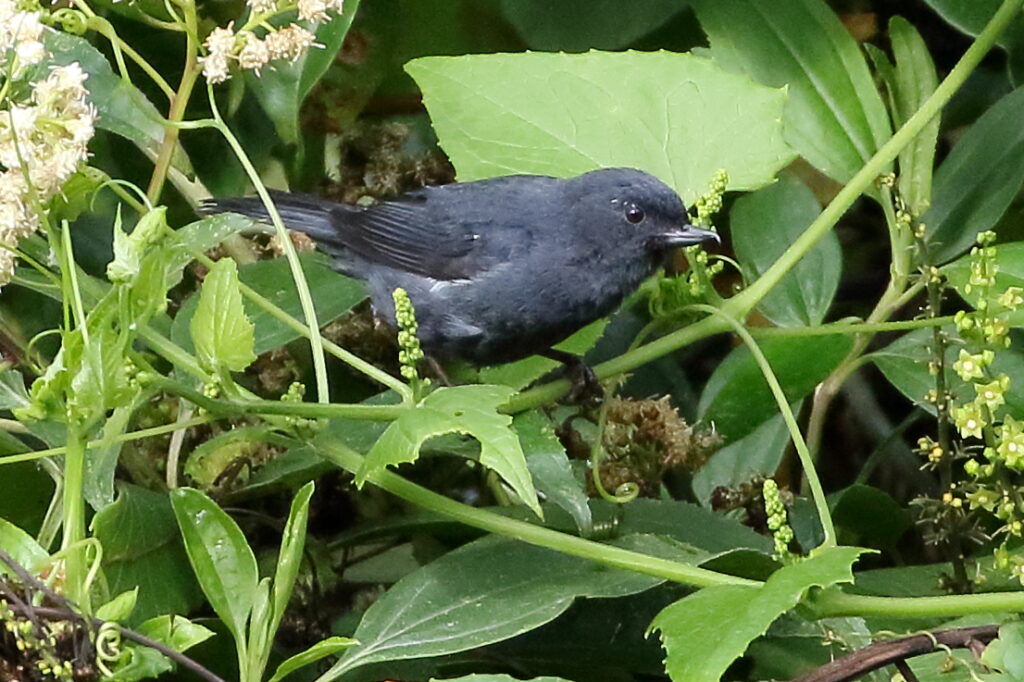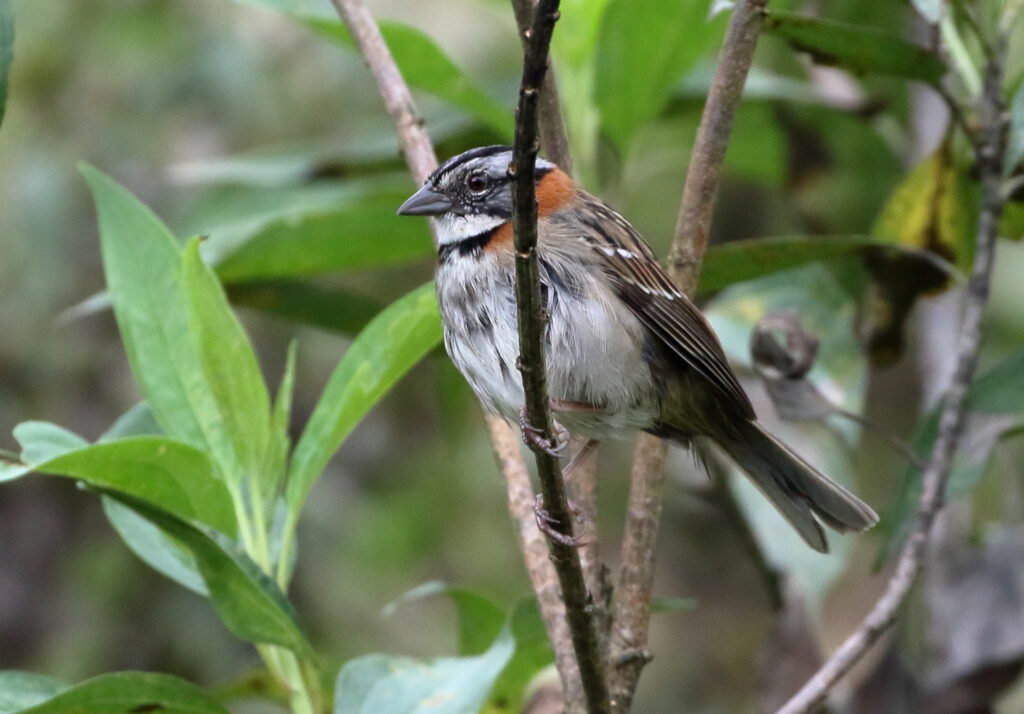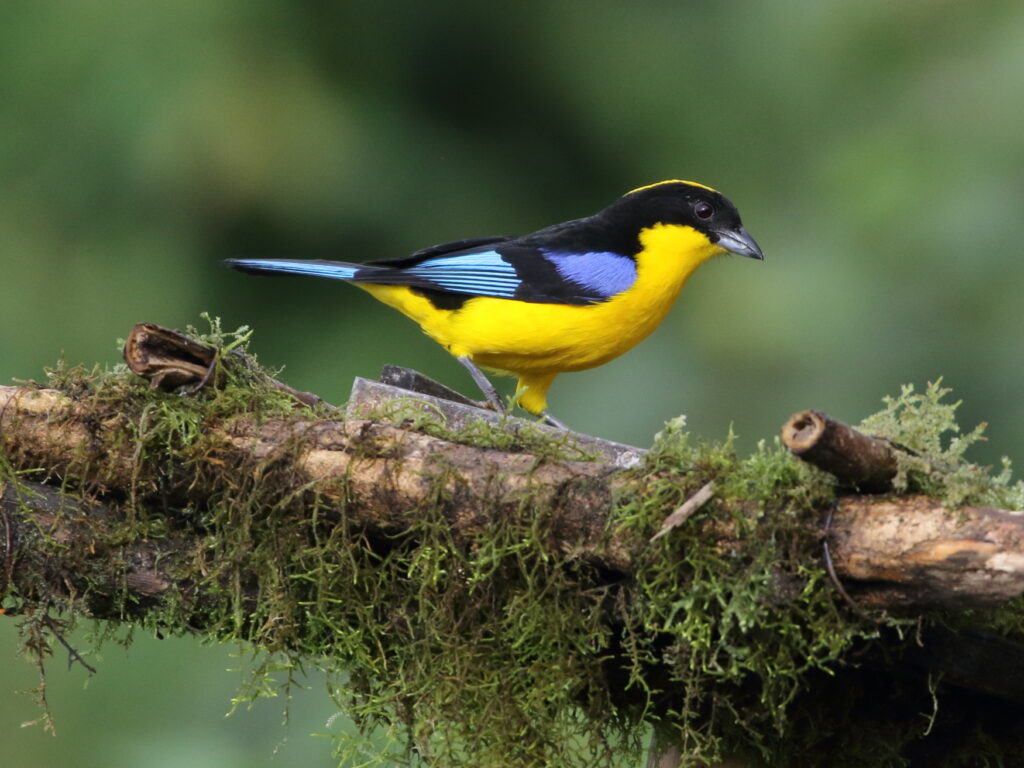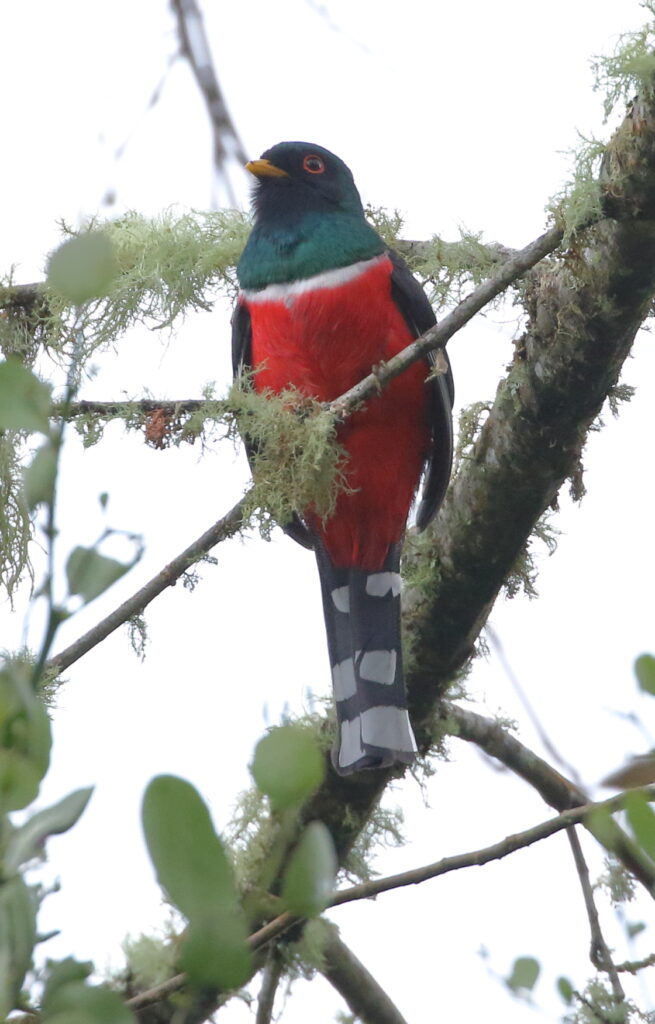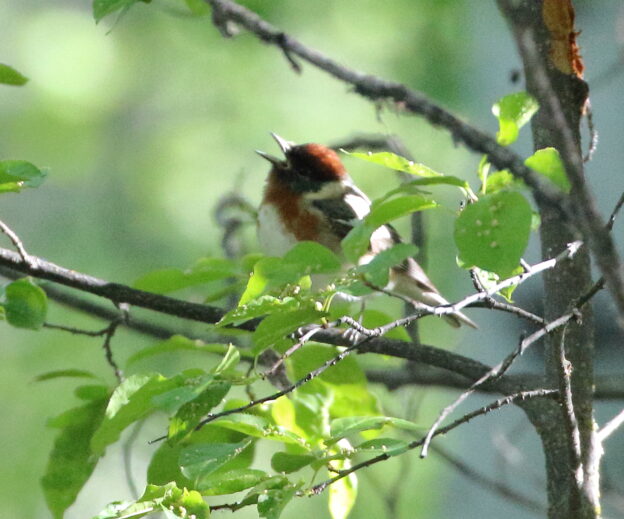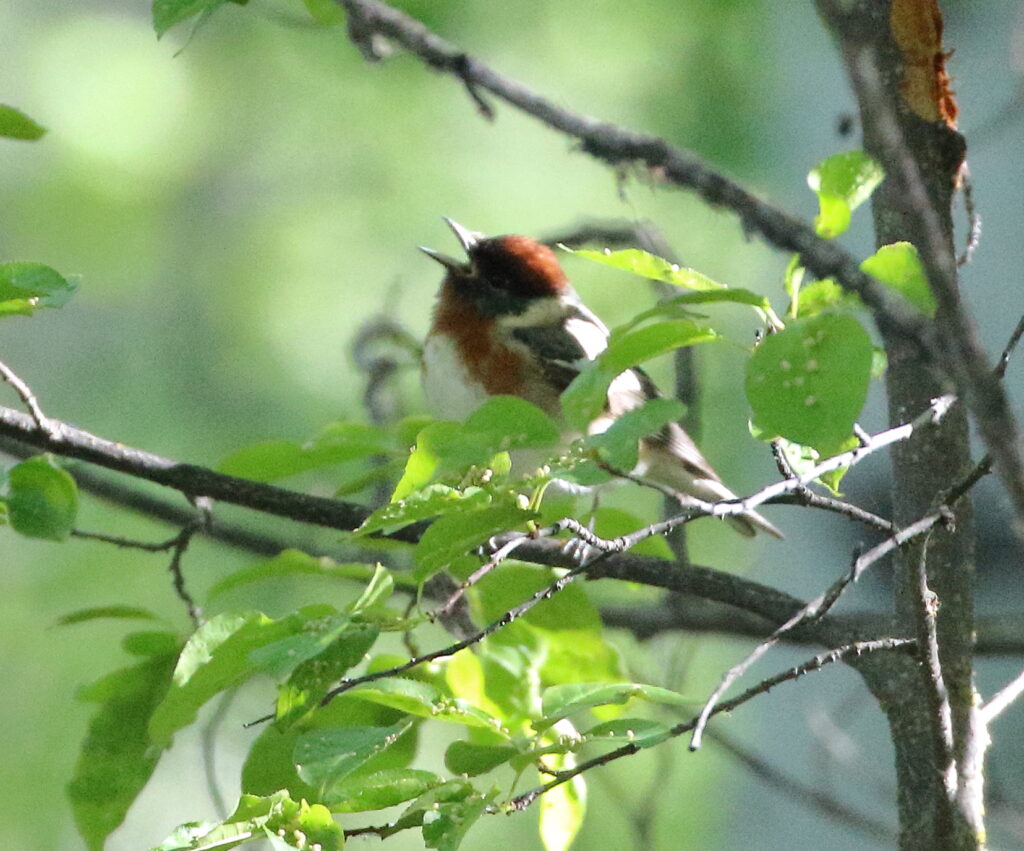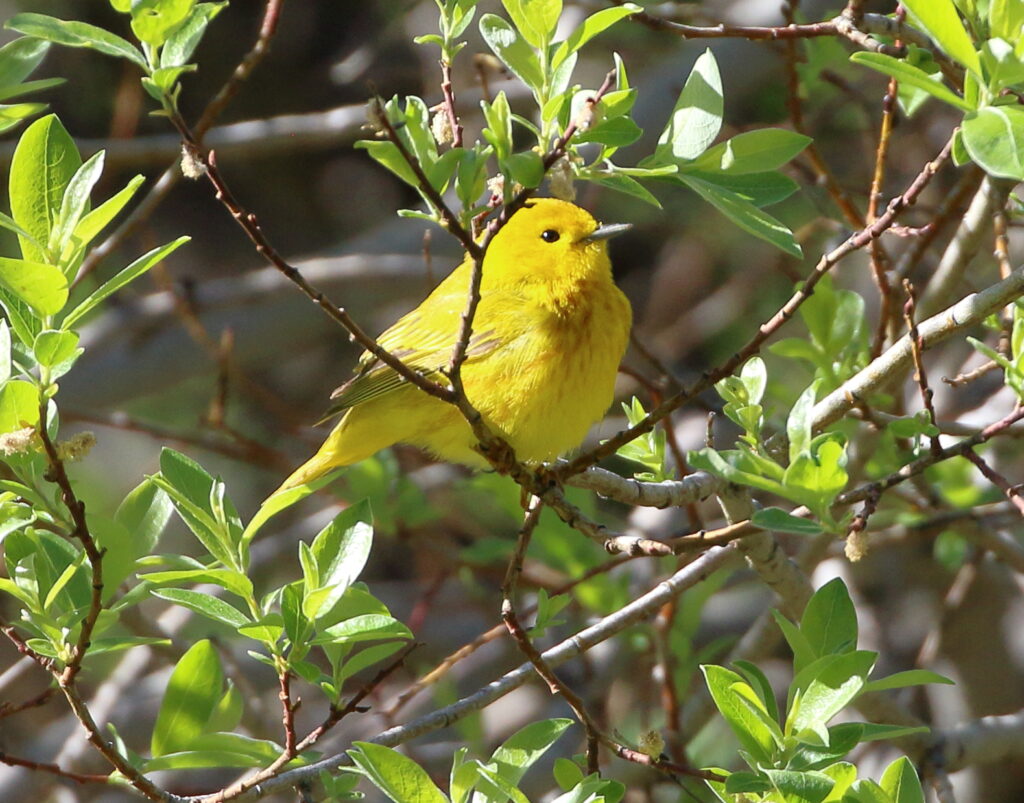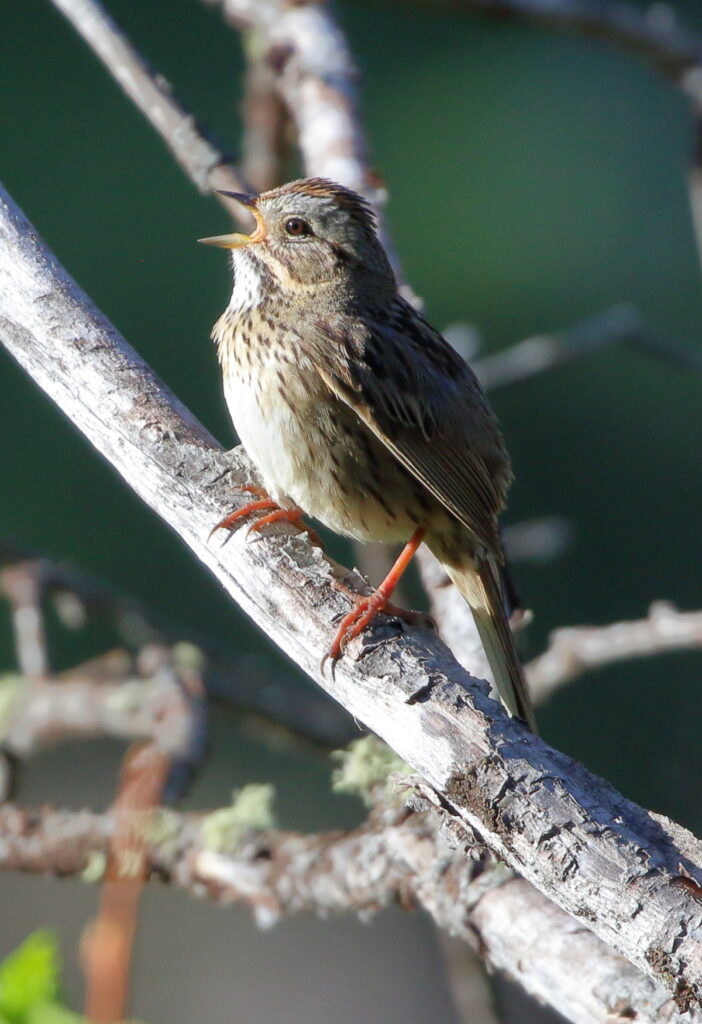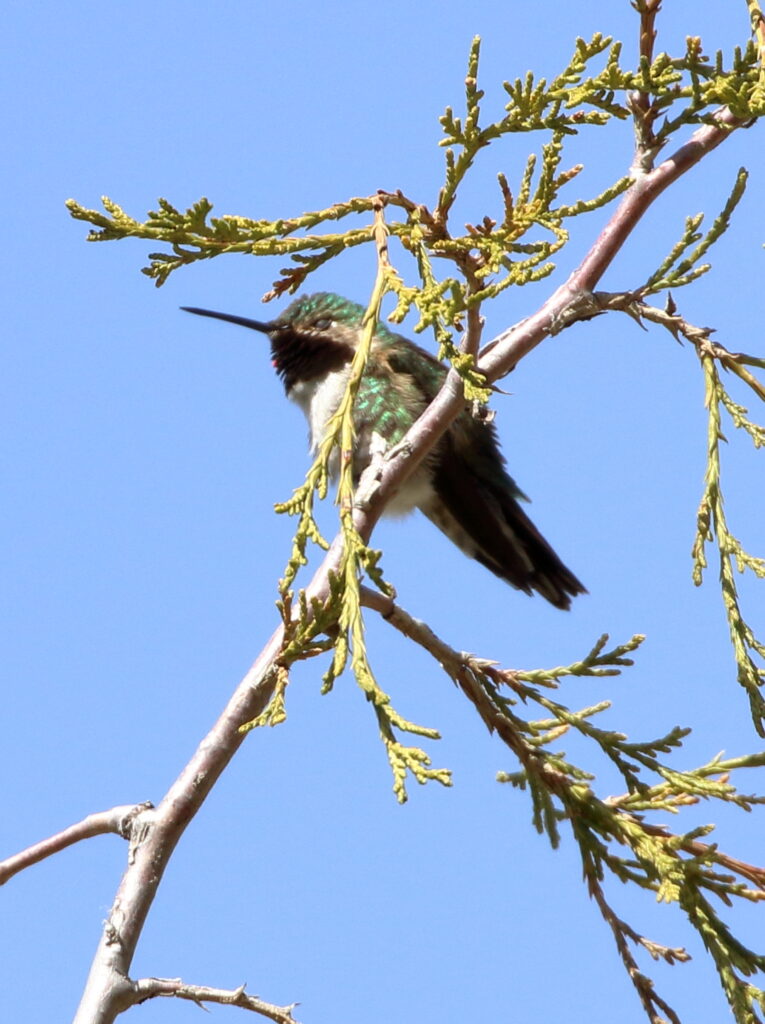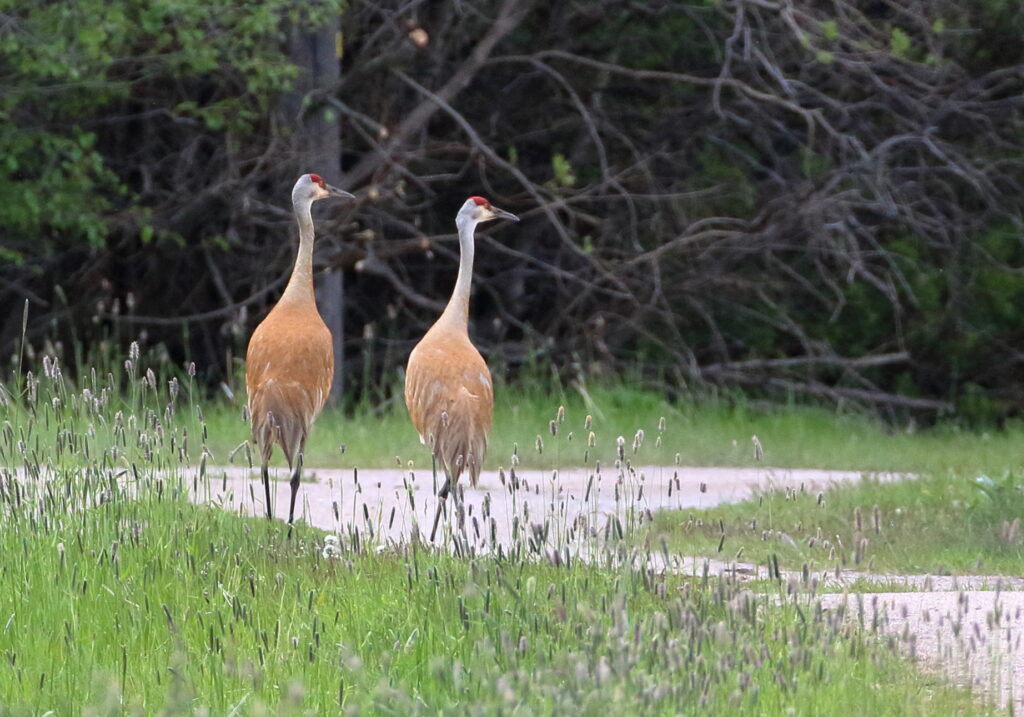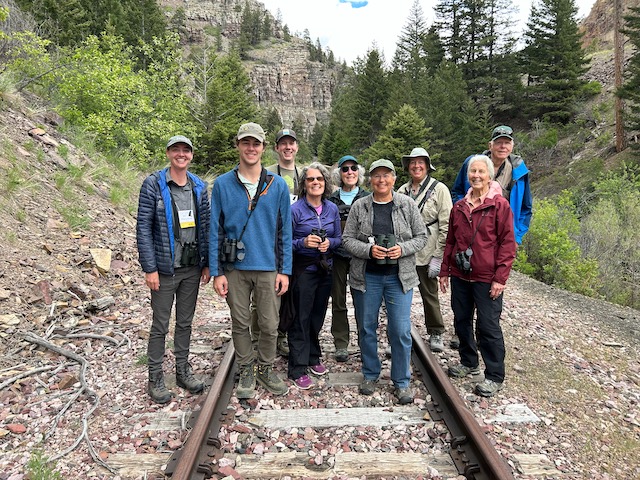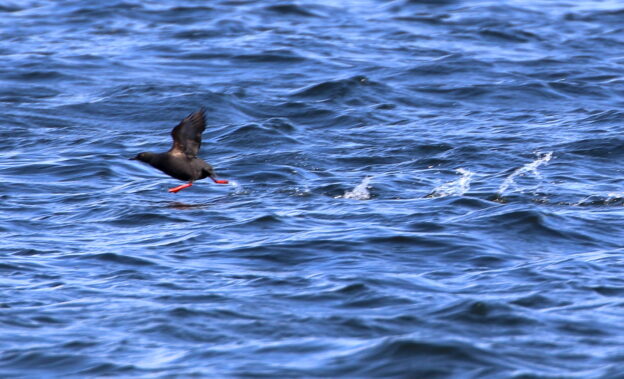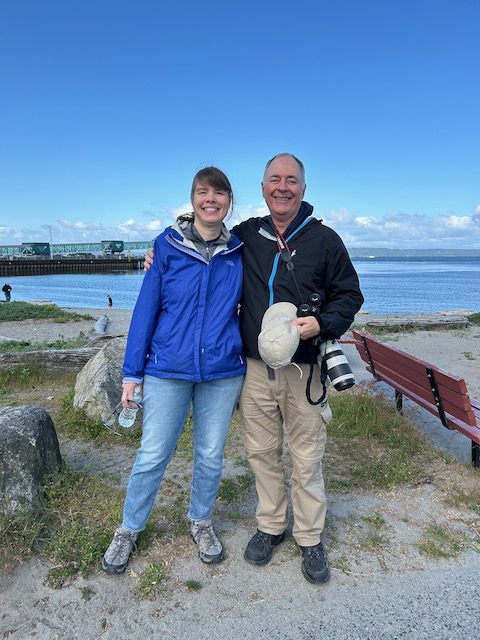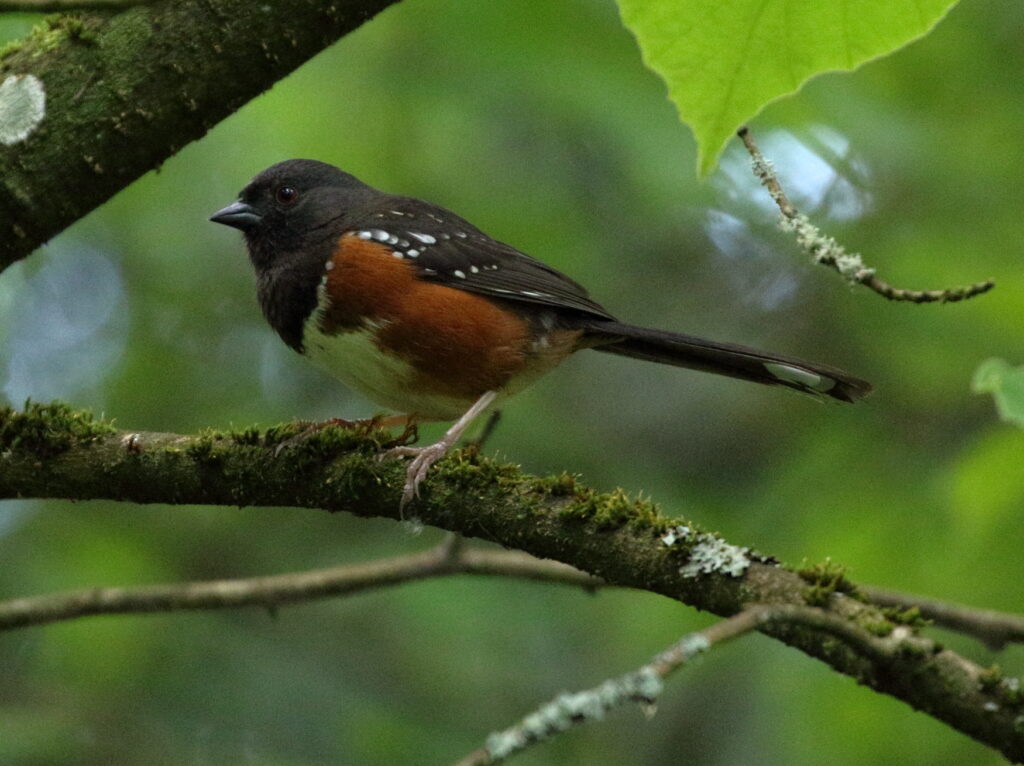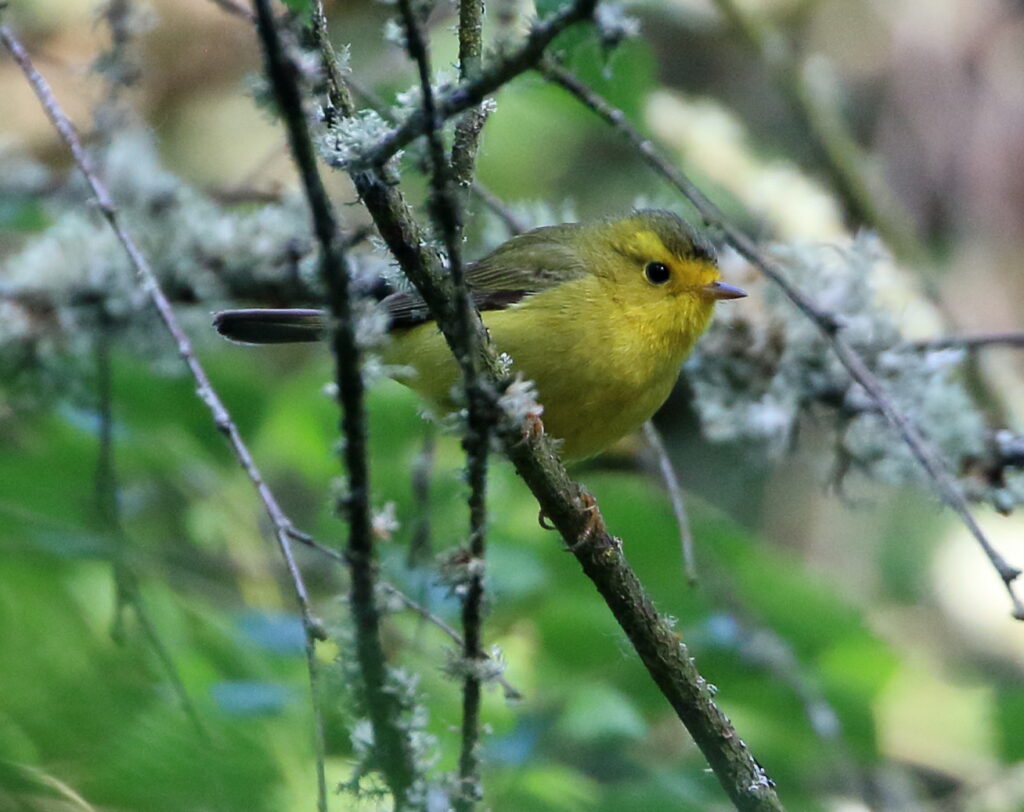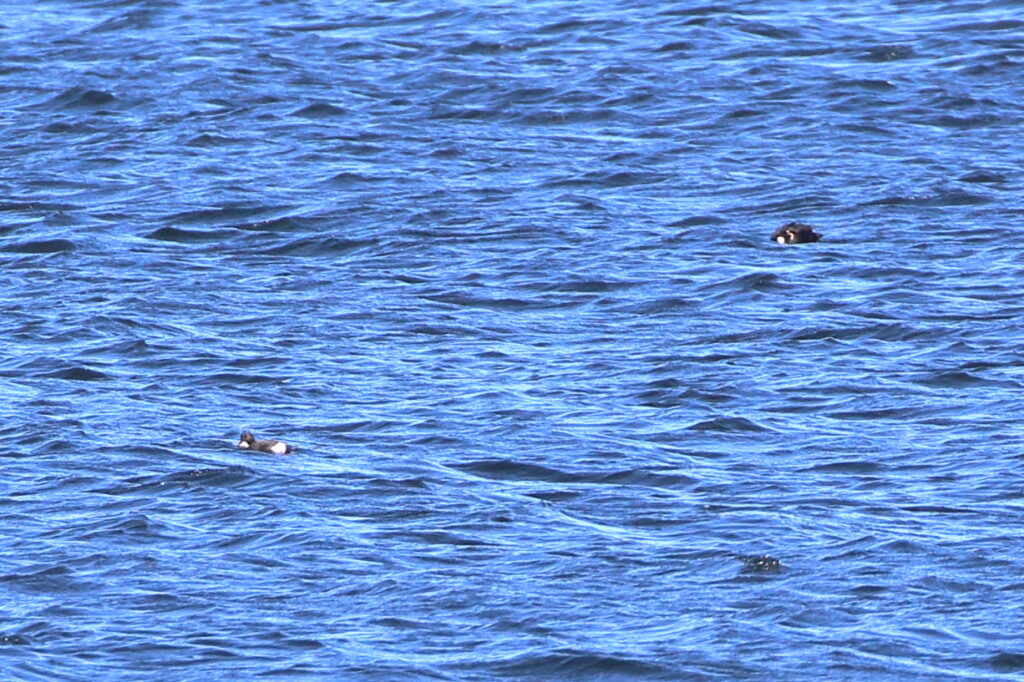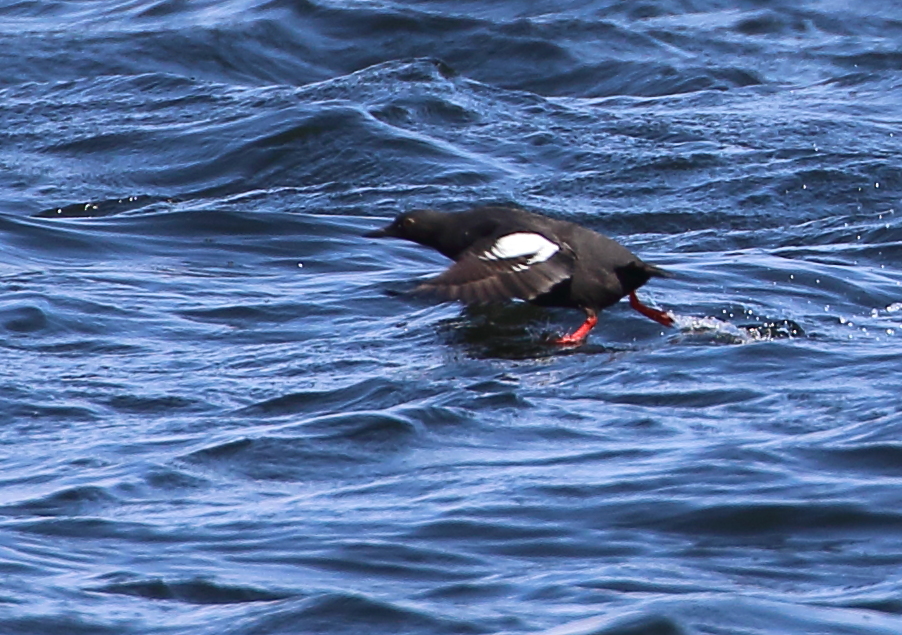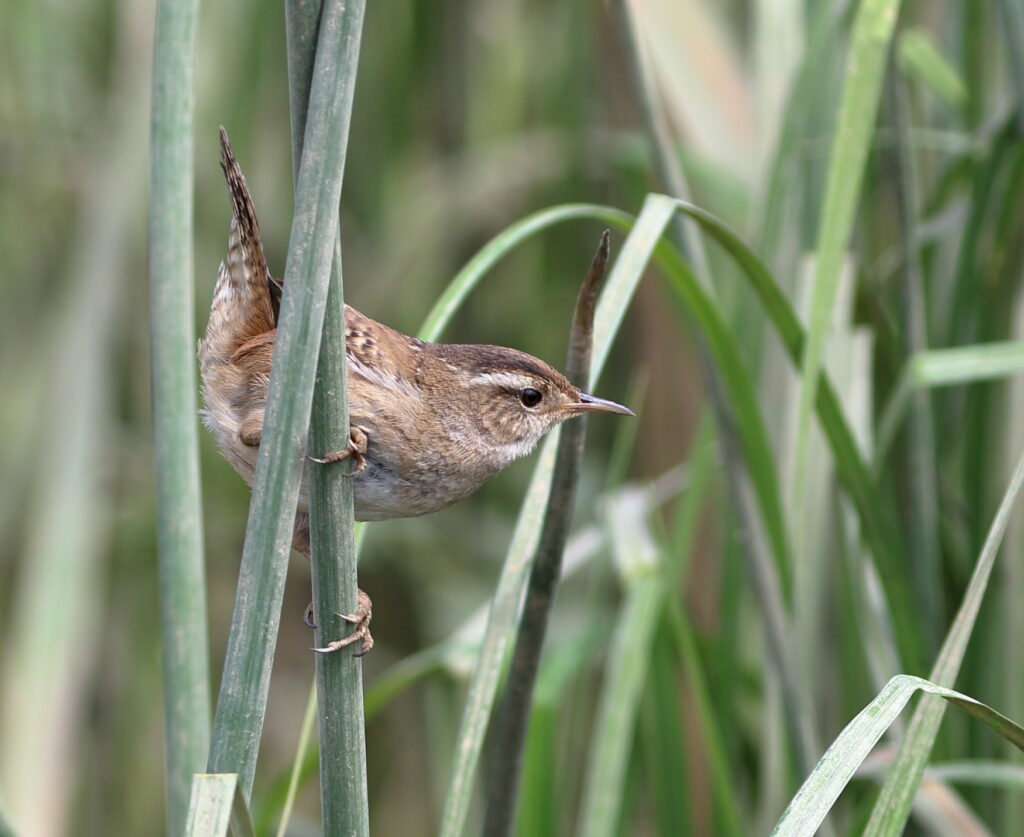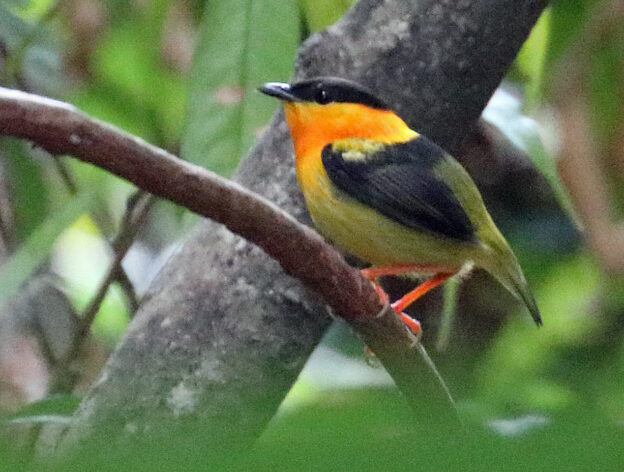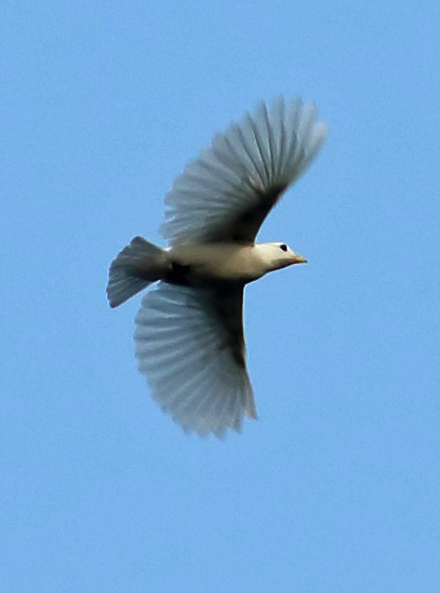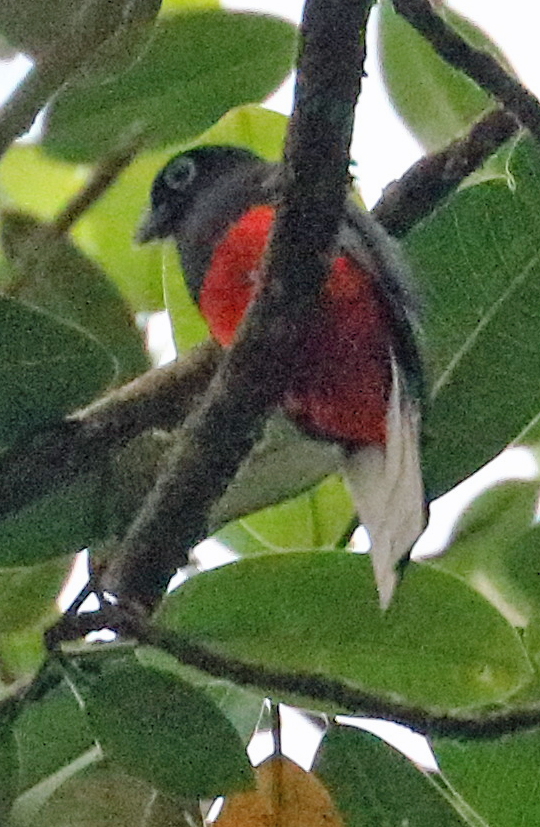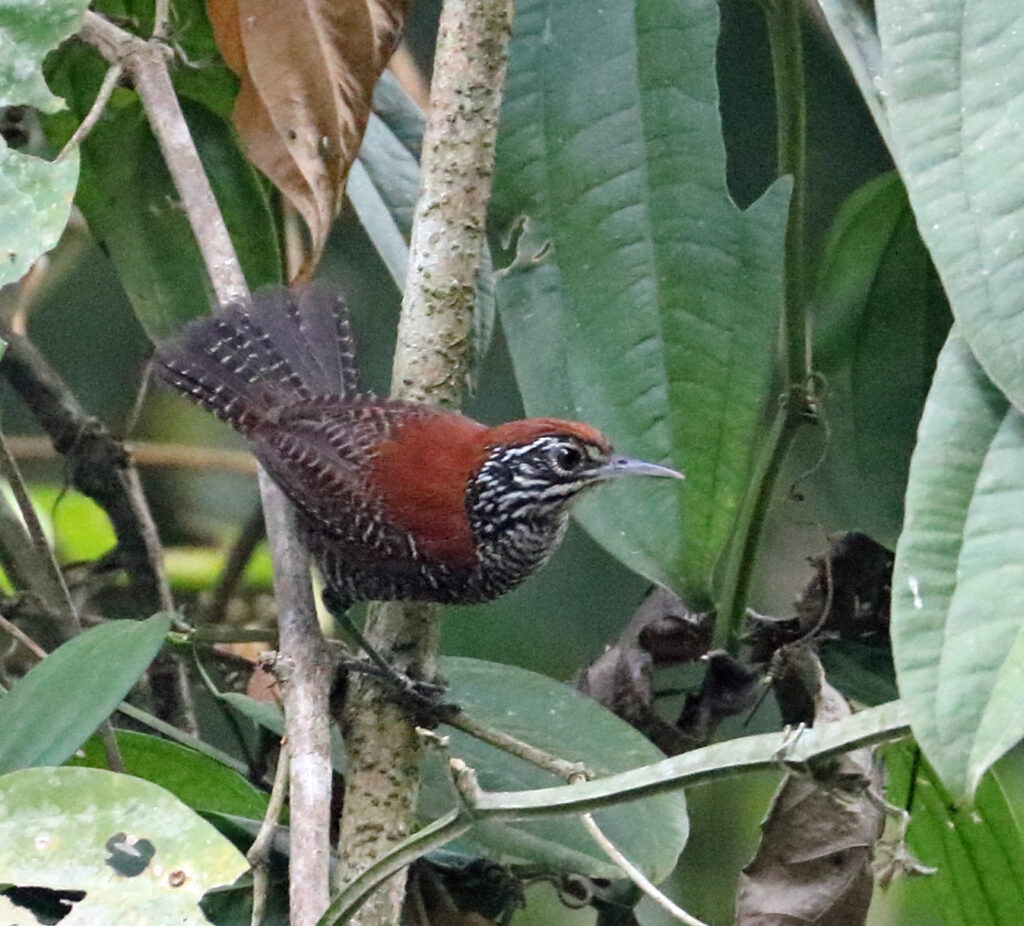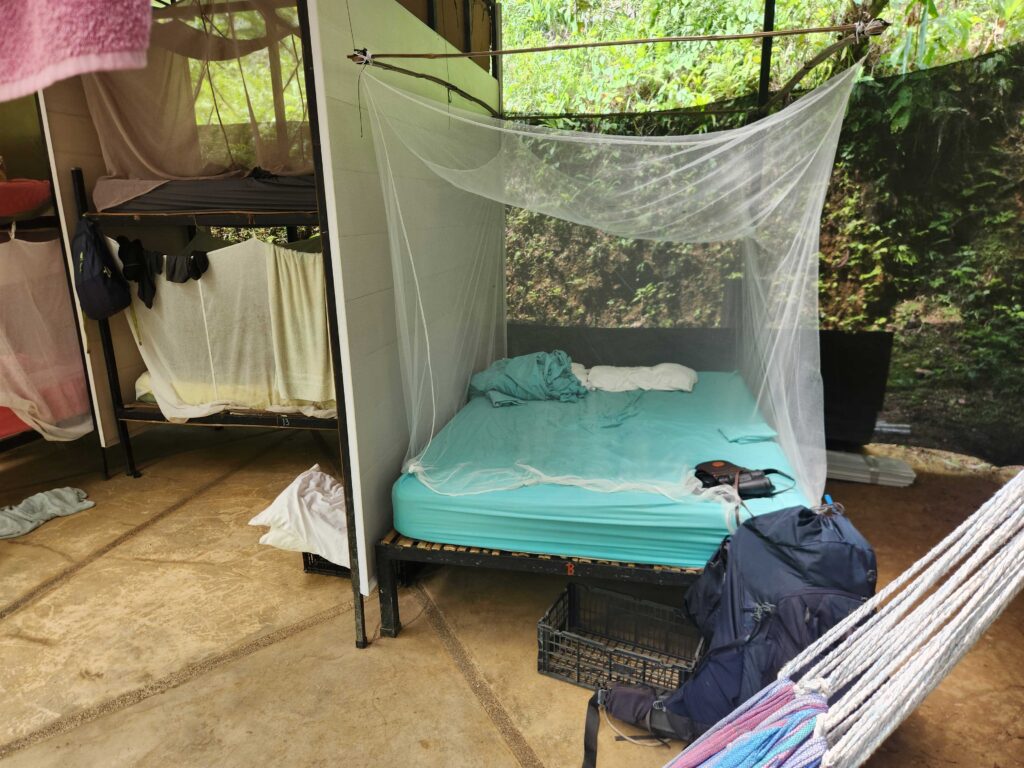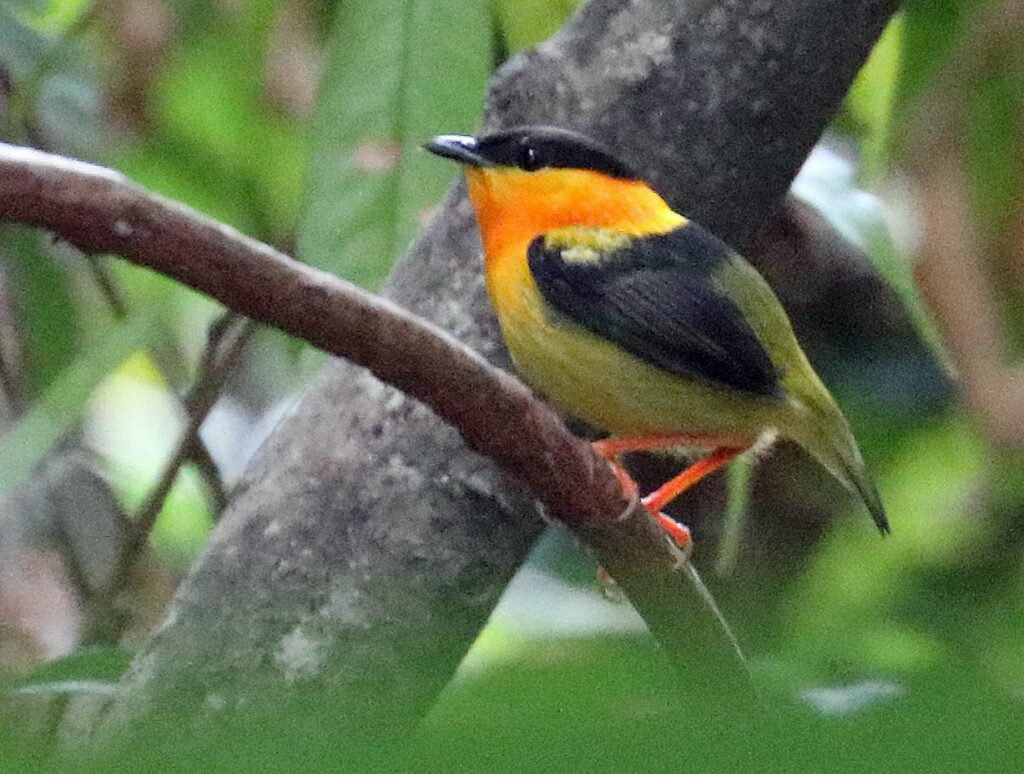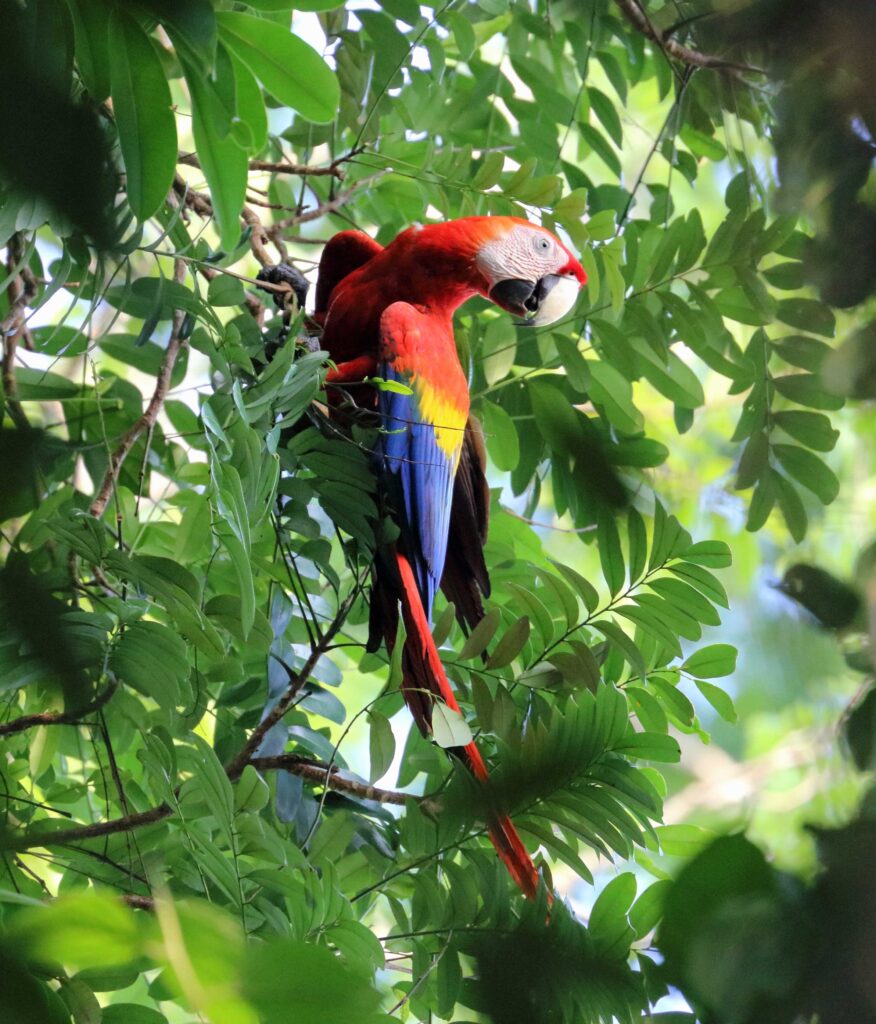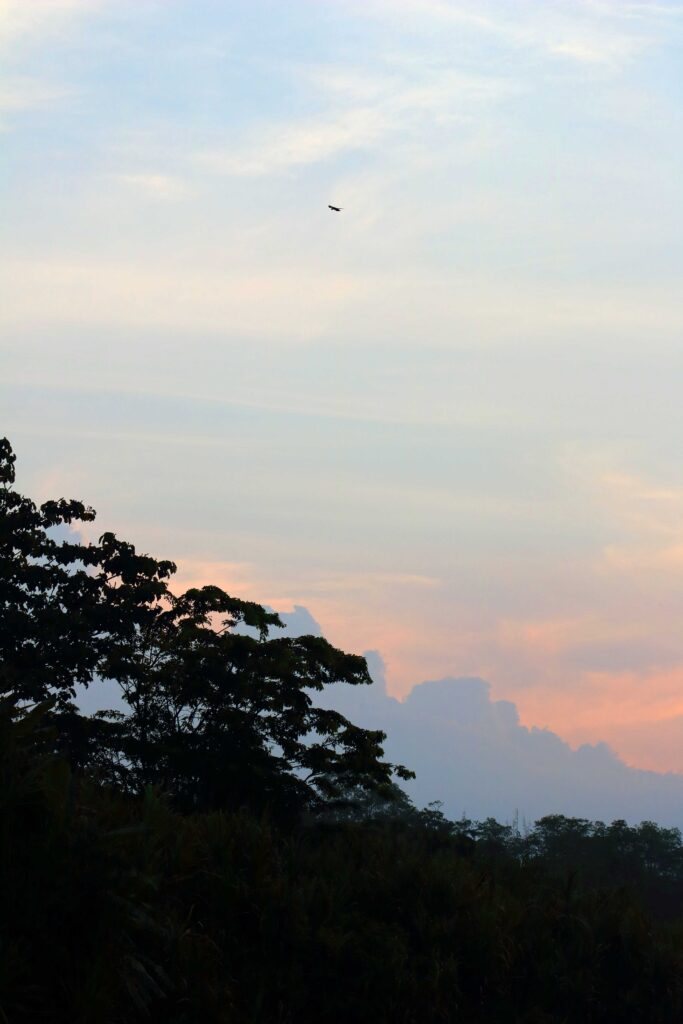Note: This blog post—and all others on FatherSonBirding—are written by REAL PEOPLE! No compensation or gratuities were provided to us in connection with this post. If you’d like to support FSB, please consider buying one—or ten—of Sneed’s books and contributing to a bird conservation organization of your choice. Thank you!
Our second morning at Owl’s Watch ecolodge, Roger and I felt particularly excited. Although we’d had a great day birding on our own the day before (see post Owl’s Watch Ecolodge Colombia Birding Part 2), this would be the first time we went out with an expert guide. We met Owl’s Watch owner, Dennis Bailey, at 6:00 a.m. at the Social, the lodge’s main meeting building, and he served us coffee and a snack. Then, we climbed into his pickup and he drove us up to the Enchanted Forest. This was an area of cloud forest at the top of his property, where he and his team had developed a nice trail system complete with hidden gnomes associated with an information guide about the ecosystem. This is also where we met Daniel Muñoz Buitrago, our Colombian guide for the day.

Both Roger and I liked Daniel immediately, and he began our tour by walking us along the road above the forest. “This is often where mixed flocks of tanagers can be found,” he explained, and sure enough, it wasn’t long before he started calling out names: Blue-capped Tanager, Saffron-crowned Tanager, Beryl-spangled Tanager, and one I especially hoped to see—Grass Green Tanager. This bird sports a stunning green color with a vividly contrasting red mask across its face.
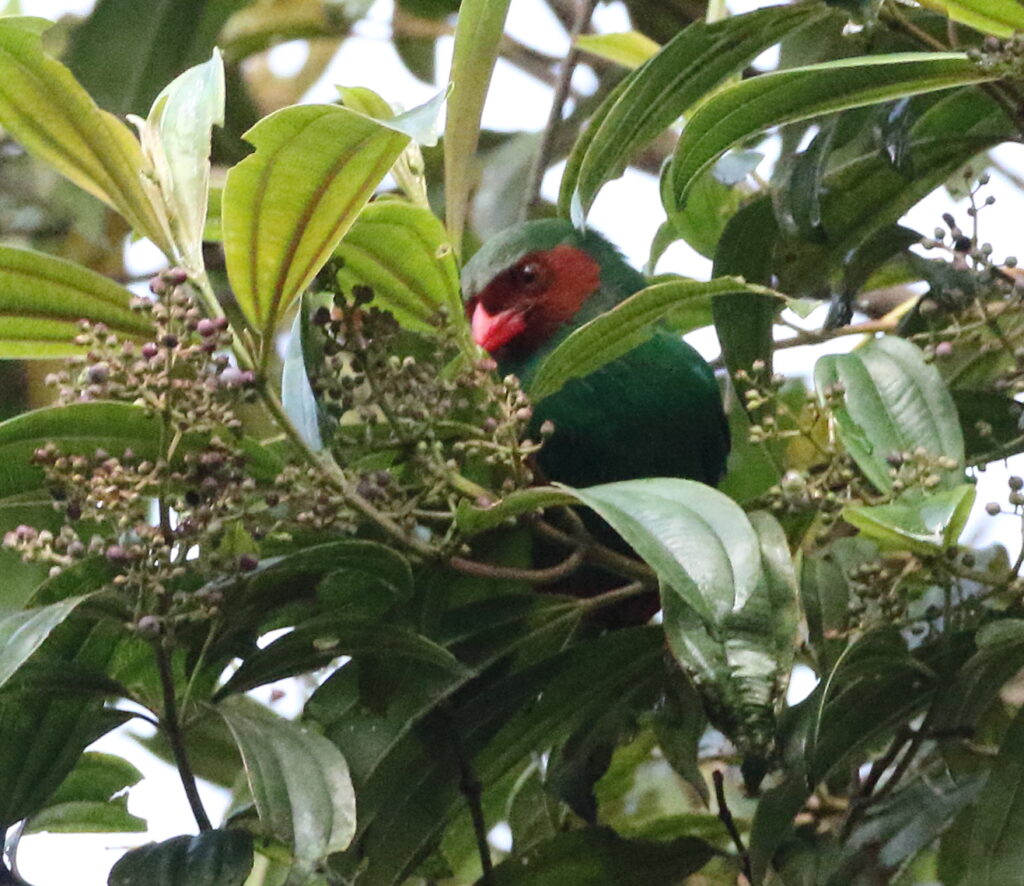
Along with the tanagers, Daniel called out names of warblers, wrens, woodcreepers, and other birds. We glimpsed some of these, but I must pause here to say a word about what it’s like to bird in tropical forests. Many people see fabulous photos of tropical birds and naturally assume that these birds will be dripping from every branch. Unfortunately, tropical forest birding can often be very challenging. Many birds never show themselves at all and are “heard only” species, identifiable only by their songs and calls—and yes, Merlin’s Sound ID still has a long way to go to become accurate in places like Colombia. Many other birds can be seen—but mainly high in the tree tops against gray, backlit conditions. This makes it tough to get good views through binoculars, and darned well impossible to capture good photos. Daniel, though, was about to greatly improve our “photography problem.”
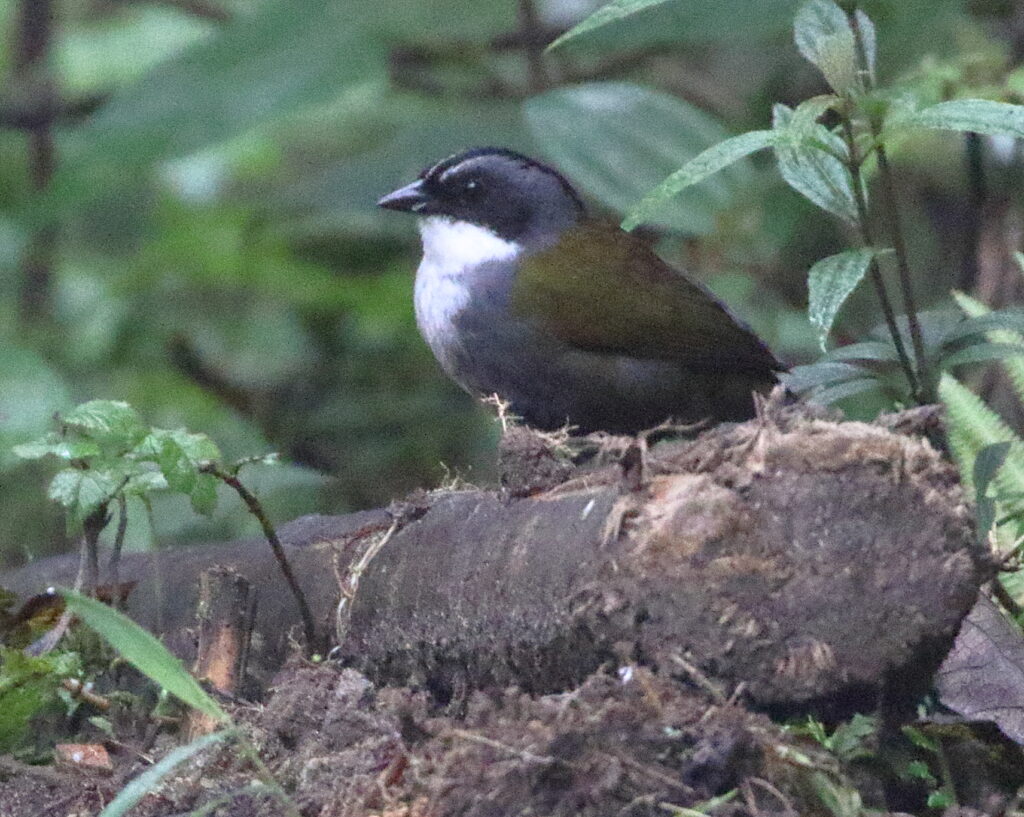
Heading into the Enchanted Forest, he took us down to a set of bird of feeders and began hanging bananas and grapes from various wires and branches. In no time, one of the forest’s most spectacular birds showed up—an Andean Motmot! We had glimpsed this bird on the drive in two nights before, but were delighted to have this additional excellent, intimate look.
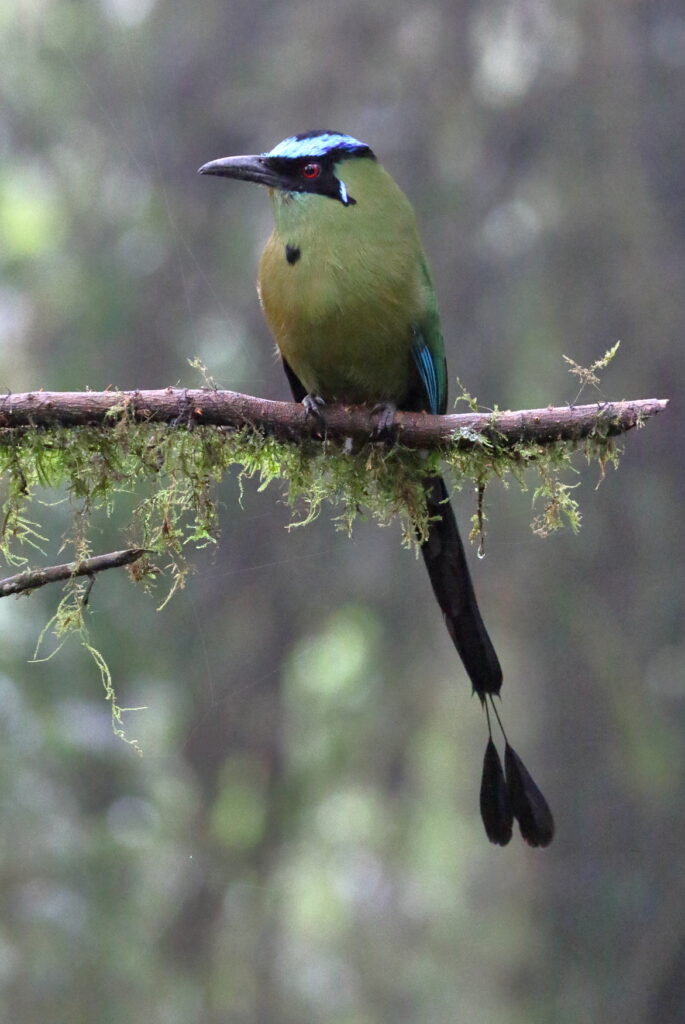
After we’d filled our share of camera memory space with the motmot, Daniel motioned us to follow him fifty meters down the trail. Even before we arrived, he started calling “Brownie, where are you? Come out, come out!”—or the equivalent in Spanish. As he did so, he set a few worms on a little fallen log about fifteen feet in front of us. Soon, he said, “Get ready. He’s coming!”
Moments later, a brown, football-shaped bird about ten centimeters (4 inches) high hopped up out of nowhere. “There he is!” Daniel cooed.
The “he” in this story was a Brown-banded Antpitta, one of Colombia’s most difficult-to-photograph species—and about as adorable as you can get. Its appearance was no accident, either. Daniel had trained the bird for months to respond to his calls—and the worms. I, for one, was grateful because I never imagined I’d get to see an antpitta in the wild. Not only are they very secretive, they often have very restricted ranges. In fact, the Brown-banded Antpitta is classified as Vulnerable due to habitat loss, and little is known about its biology and behavior.
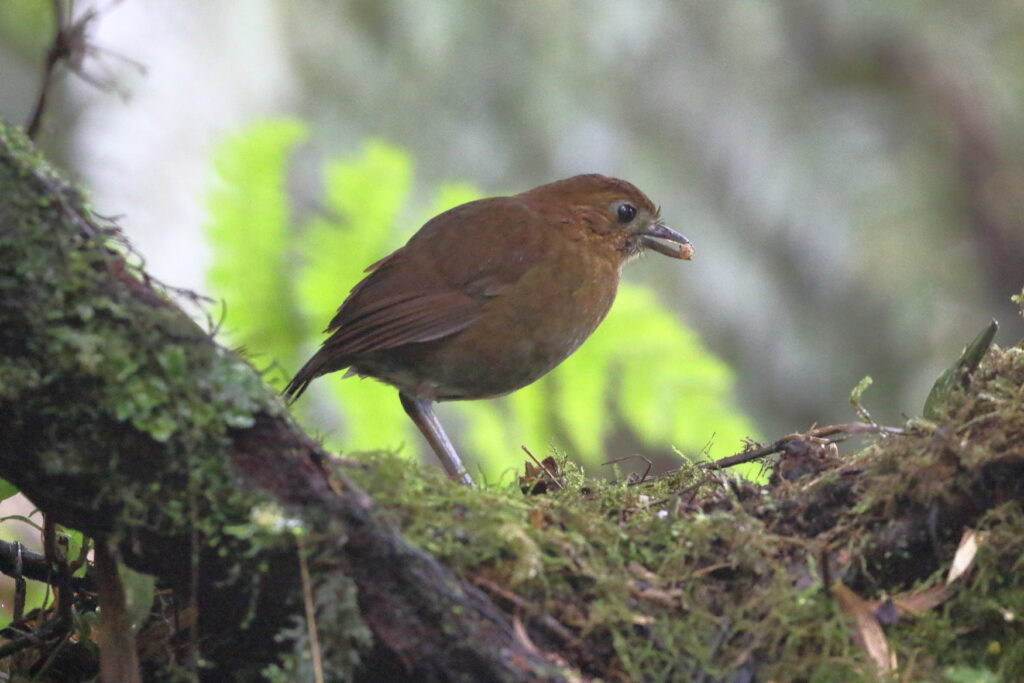
We left Daniel to “clean up” after Brownie and walked back to the feeders. As I was about to step into the clearing, however, I hissed, “Roger, stop!” There, perched on a feeder branch only seven or eight meters away, sat one of the other birds we especially hoped to see—Black-billed Mountain-Toucan! Roger quickly snapped some excellent photos, but I managed only a couple of crummy ones before the bird flew. Still, it was the only BBMT we would see on the trip.

Back on the road, we made our way through cloudy conditions down to the trail that left from the parking area above the lodge (see previous post). We returned to the hummingbird viewing platform and immediately saw a species that got Daniel excited: an uncommon hummingbird called a White-throated Daggerbill. Of course, there were also eleven other species of hummingbirds as well (always, always, hummingbirds), but unbeknownst to us, we were about to meet one of the coolest birds that we’d ever seen.
After a few minutes watching the hummingbird action, Daniel motioned us to follow him down to another little spot about thirty meters away. Here he again pulled out his worm bag and began calling, “Gordita! Gordita! Come out!” Gordita, of course, means “little fat one” in Spanish, and both Roger and I chuckled. But who exactly was Gordita?
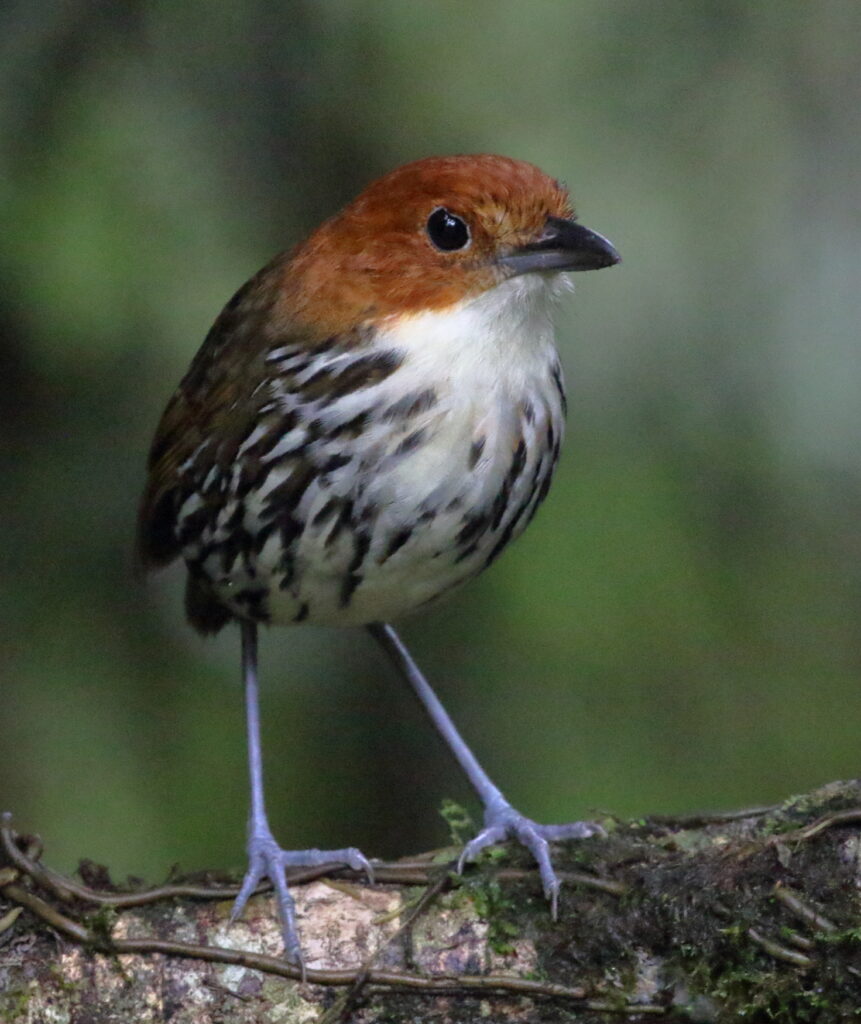
After a few moments, out hopped one of the most remarkable birds I’d ever seen. It was another antpitta—this one, a Chestnut-crowned Antpitta! The bird was about twice the size of Brownie the Brown-banded Antpitta and to me it looked just like a little R2 unit from Star Wars. In an instant, it became one of my favorite birds ever, and I’m pretty sure Roger felt the same way.
Daniel’s surprises weren’t over. Continuing on down the trail, he called in another remarkable bird—a Rufous-Crowned Tody-Flycatcher. At least three or four of these would easily fit into your hand, but again, we never would have seen it without Daniel’s knowledge and expertise.
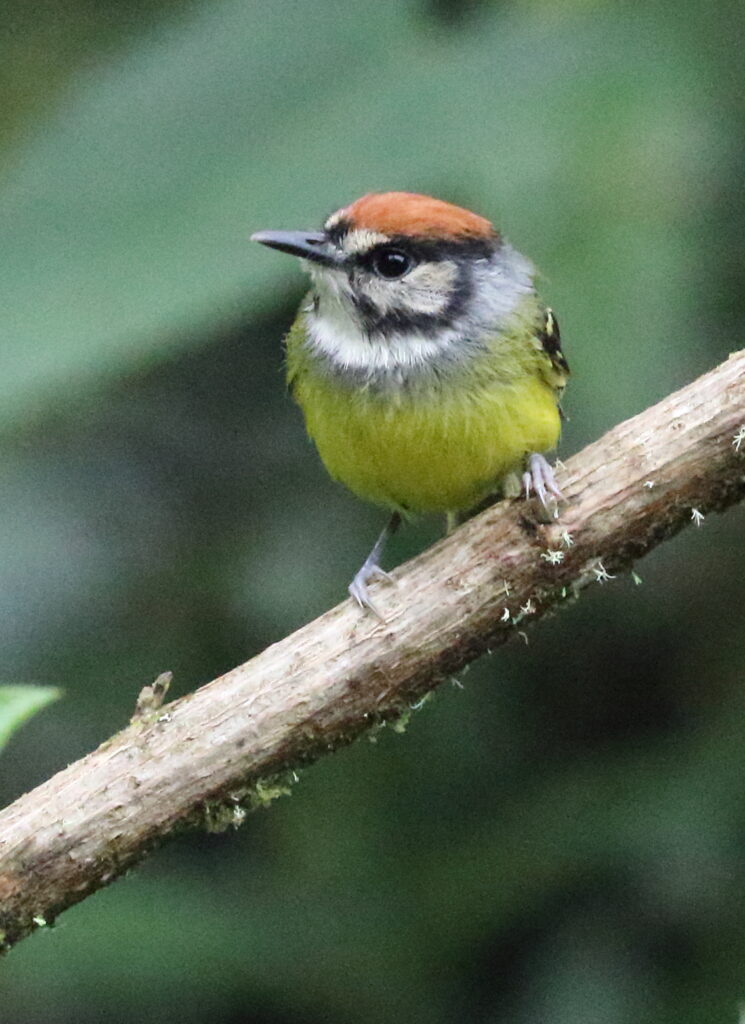
Which brings up an important point about Colombian birding. While it is possible to bird on your own in Colombia, I highly recommend taking advantage of its growing network of lodges. Although much safer than it used to be, the country does still have its share of problems, ranging from common crime and armed conflict to dangerous road and trail conditions. Taking advantage of the expertise of lodges will help make sure you don’t accidentally wander into a hazardous area. Even better, the lodges we encountered use locally-trained, Colombian guides. Many, like Daniel, speak excellent English, and prices are extremely reasonable. By hiring them, foreign visitors are giving a boost to the local economy—and creating more incentive to protect Colombia’s environment.
After getting our fill of the tody-flycatcher, Daniel led us back down to the Social for a well-deserved (or at least well-received) lunch prepared by the Owl’s Watch cook, David. It had been a splendid day all-around and we so appreciated everything Daniel had shown us. Even better, we were excited to have one more day of birding at Owl’s Watch. That, however, didn’t keep us from eagerly anticipating our next great Colombian lodge destination—which I’ll introduce in the next post!
